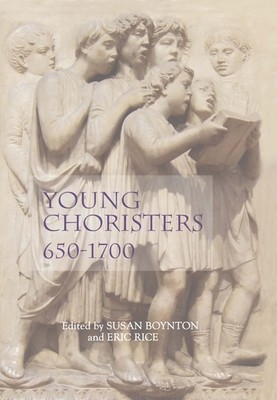
- We will send in 10–14 business days.
- Publisher: Boydell Press
- ISBN-10: 1843834138
- ISBN-13: 9781843834137
- Format: 15.8 x 23.4 x 3.1 cm, hardcover
- Language: English
- SAVE -10% with code: EXTRA
Young Choristers, 650-1700 (e-book) (used book) | bookbook.eu
Reviews
Description
First full-length consideration of the role played by young singers, bringing out its full significance and its development over time.
Young singers played a central role in a variety of religious institutional settings: urban cathedrals, collegiate churches, monasteries, guilds, and confraternities. The training of singers for performance in religious services was so crucial as to shape the very structures of ecclesiastical institutions, which developed to meet the need for educating their youngest members; while the development of musical repertories and styles directly reflected the ubiquitous participation of children's voices in both chant and polyphony. Once choristers' voices had broken, they often pursued more advanced studies either through an apprenticeship system or at university, frequently with the help of the institutions to which they belonged.This volume provides the first wide-ranging book-length treatment of the subject, and will be of interest to music historians - indeed, all historians - who wish to understand the role of the young in sacred musical culture before 1700. SUSAN BOYNTON is Associate Professor of Historical Musicology at Columbia University; ERIC RICE is Assistant Professor of Music at the University of Connecticut at Storrs. CONTRIBUTORS: SUSAN BOYNTON, SANDRINE DUMONT, JOSEPH DYER, JANE FLYNN, ANDREW KIRKMAN, NOEL O'REGAN, ALEJANDRO PLANCHART, RICHARD RASTALL, COLLEEN REARDON, ERIC RICE, JUAN RUIZ JIMENEZ, ANNE BAGNALL YARDLEY
EXTRA 10 % discount with code: EXTRA
The promotion ends in 18d.14:19:48
The discount code is valid when purchasing from 10 €. Discounts do not stack.
- Publisher: Boydell Press
- ISBN-10: 1843834138
- ISBN-13: 9781843834137
- Format: 15.8 x 23.4 x 3.1 cm, hardcover
- Language: English English
First full-length consideration of the role played by young singers, bringing out its full significance and its development over time.
Young singers played a central role in a variety of religious institutional settings: urban cathedrals, collegiate churches, monasteries, guilds, and confraternities. The training of singers for performance in religious services was so crucial as to shape the very structures of ecclesiastical institutions, which developed to meet the need for educating their youngest members; while the development of musical repertories and styles directly reflected the ubiquitous participation of children's voices in both chant and polyphony. Once choristers' voices had broken, they often pursued more advanced studies either through an apprenticeship system or at university, frequently with the help of the institutions to which they belonged.This volume provides the first wide-ranging book-length treatment of the subject, and will be of interest to music historians - indeed, all historians - who wish to understand the role of the young in sacred musical culture before 1700. SUSAN BOYNTON is Associate Professor of Historical Musicology at Columbia University; ERIC RICE is Assistant Professor of Music at the University of Connecticut at Storrs. CONTRIBUTORS: SUSAN BOYNTON, SANDRINE DUMONT, JOSEPH DYER, JANE FLYNN, ANDREW KIRKMAN, NOEL O'REGAN, ALEJANDRO PLANCHART, RICHARD RASTALL, COLLEEN REARDON, ERIC RICE, JUAN RUIZ JIMENEZ, ANNE BAGNALL YARDLEY


Reviews